I read an interesting article about organic food, written by the Accidental Hedonist. It is an article in response to another article written in the New York Times. I completely agree with AH in that organic food and its underlying philosophy is for everyone and actually, should be integrated by everyone, but unfortunately the organic lifestyle tends to be afforded exclusively by the privileged. The article was written with an American perspective but it does apply in every country that grows organic food. All except Cuba where the conventional way of growing fruits and vegetables is organically.
Wednesday, July 27, 2005
Monday, July 25, 2005
Organic Market
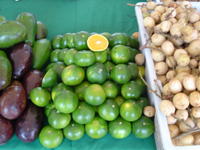
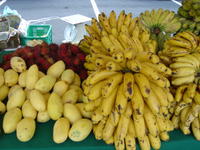

The Organic Market was teeming with fresh produce yesterday. I bought a big load of dalandan, some tomatoes, ampalaya and eggs. I went as early as 7:30 am to catch the sale of millet suman which sells out by 10:00 am. I bought 30 of these pricey sumans to give everyone in my household a taste! Suman, for those not in the know, is a mildly sweet, sticky, glutinous pudding wrapped and steamed in pandan leaves. Suman is usually made with rice and sometimes casava. It is Filipino street food brought to new and nutritious heights by Maribel Van Hoven who cooks and sells the millet suman or bud bud kabog at the Salcedo Market on Saturdays and the Legaspi Market on Sundays. Maribel is a big fan of millet because of its nutritional and culinary value. She wanted to promote the use of this tasty seed and make it a common household food, ultimately creating bud bud kabog. According to Vincent Van Hoven who does the actual selling for his wife (isn't that adorable?) the millet used in their suman grows wild in the mountains of Manguyod, Negros Occidental. The exact location is unknown. Once a week, a lone indigenous gatherer comes down from the mountains and sells the wild millet to the Van Hovens. The millet then travels by plane to Manila and is brought to Ayala Alabang to be cooked into a delicious suman by Maribel. Then the suman is brought to the weekend Markets in Makati. No wonder they're costly!
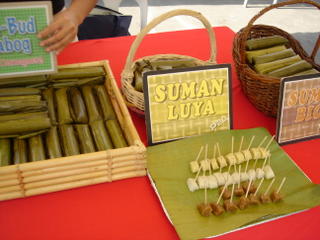
Afterwards, I went with Sister Rosalie to visit Dr. Carandang, a retired Dean of Agronomy in Los Banos, Laguna. He raises ducks and makes salted duck eggs as a hobby. The eggs were good. Not too salty, perfectly cooked and without the toxic red dye commonly used to distinguish salted chicken eggs from plain ones. Salted duck eggs are larger and have more yolk to whites ratio than salted chicken eggs. That's the way I like it. We were a given a tour of his private farm before going to his home for lunch where I met his lovely wife, daughter and grandchild. We were treated to a homecooked meal of Salted Egg Salad, Ubod Lumpia, Vegetable Sinigang and Shrimp Lumpia. For dessert we had Leche Flan made with duck eggs and fresh fruit from the garden. Yes, that's right I said fresh fruits from the garden. The Carandangs have the plumpest lakatan bananas I have ever seen which will be available in my farm next year thanks to the kindness and generosity of Dr. Carandang. They also have rambutan and atis trees growing in their backyard. What an idyllic life.
I then left Sister Rosalie and the charming Carandangs to go to the University of the Philippines, Los Banos DTRI (don't ask me what it stands for) to buy their famous milk, yogurt and carabao cheese. There was no cheese which was very disappointing. Lastly, I went to Herbana Farms to talk with Gil Carandang (no relation to Dr. Carandang), my organic farm landscaper, about my change of plans.
Plans on what to plant on my farm will have to change because the seeds I ordered will arrive in a month and a half. In the meantime, I will have to make use of what's available in the country. There are quite a number of conventional and hybrid seeds available but of course I cannot use. So I will be planting organic seedlings from organic farmers around Luzon. Corn, edamame, herbs, flowers and coffee are on the agenda. These organic produce will be available in two months together with fresh eggs and maybe some sprouts. Ok gotta go and have my breakfast of dalandan juice and bud bud kabog. Bon Apetit!
Monday, July 11, 2005
Recipe: Chocolate Chip Croquant Cookies
I made these cookies for my bestest friend Rosanna's baby shower, which I happily hosted. These cookies were a hit and together with the rest of the menu resulted in a chorus of "Macky, you should open your own restaurant..." Well, I have Nic of blog Bakingsheet to thank for that. I tweaked his recipe, like any self-respecting cook would, and added croquants instead of caramel to the batter. I also used organic Muscovado sugar from Bacolod in place of brown sugar.

Chocolate Chip Croquant Cookies
2 1/2 cups all-purpose flour
1 tsp baking soda
1/2 tsp baking powder
1 tsp salt
1 cup unsalted butter, softened
1 cup sugar
1/2 cup Muscovado sugar
2 eggs
6 ounces dark chocolate, chopped (1 1/2 cups)
1 cup croquant
Preheat oven to 375F.
Whisk together flour, baking soda, baking powder and salt in a medium bowl.
In a large bowl, cream together butter and sugars until light, about 2 minutes. Add in eggs one at a time. Don't worry if the batter separates, just keep beating until it becomes smooth. Stir in flour mixture, followed by croquant and chocolate chunks until batter is uniform and no streaks of flour remain.
Drop rounded tablespoonfuls onto silicon baking sheet. Cookies will spread, so allow at least 2 inches between each cookie. Bake for 10-11 minutes, until cookies are lightly browned around the edges. Allow to cool on the cookie sheet for 5-10 minutes before removing to a wire rack to cool completely.
Makes about 4 dozen.
The rest of the menu...


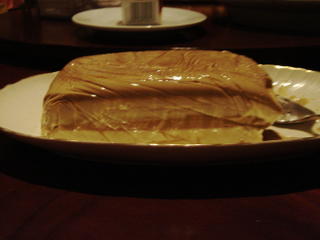

Whats food without a party?
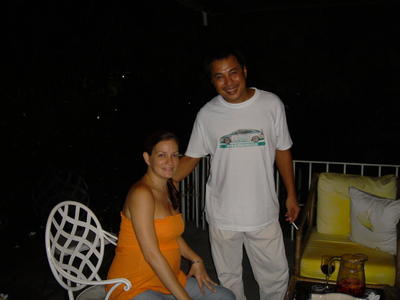








Chocolate Chip Croquant Cookies
2 1/2 cups all-purpose flour
1 tsp baking soda
1/2 tsp baking powder
1 tsp salt
1 cup unsalted butter, softened
1 cup sugar
1/2 cup Muscovado sugar
2 eggs
6 ounces dark chocolate, chopped (1 1/2 cups)
1 cup croquant
Preheat oven to 375F.
Whisk together flour, baking soda, baking powder and salt in a medium bowl.
In a large bowl, cream together butter and sugars until light, about 2 minutes. Add in eggs one at a time. Don't worry if the batter separates, just keep beating until it becomes smooth. Stir in flour mixture, followed by croquant and chocolate chunks until batter is uniform and no streaks of flour remain.
Drop rounded tablespoonfuls onto silicon baking sheet. Cookies will spread, so allow at least 2 inches between each cookie. Bake for 10-11 minutes, until cookies are lightly browned around the edges. Allow to cool on the cookie sheet for 5-10 minutes before removing to a wire rack to cool completely.
Makes about 4 dozen.
The rest of the menu...




Whats food without a party?






Saturday, July 09, 2005
Organic Standards
It is very unfortunate that there are no laws requiring organic certification for farms or ready-made food that claim their products organic. Anyone may say they are selling or growing organic produce even if they are not. Anyone may claim organic standards based on their own definition of organic.
I'm learning about all of this as I was innocently buying organic produce wherever a grocer claimed it. When I spoke with Mara Loinaz, a proponent for organic produce and organizer of the Organic Market, she said that most who claim organic are actually not. Mara inspects the farms who want to sell their produce at her market to make sure they are up to her standards of organic. But what exactly are the Philippine standards of organic? The Phil. government has a body that certifies farms and ready-made food, but it isn't required. As I understand it it is used by organic farms that export their produce because the importing countries require certification. I did a little research and found a brief explanation of organic standards by the Department of Agriculture. Similarly, the Agribusiness & Marketing Assistance Service and MASIPAG, "a farmer-led network of people's organizations, non-government organizations and scientists working towards the sustainable use and management of biodiversity...", have both written their standards for organic farming.
I'm learning about all of this as I was innocently buying organic produce wherever a grocer claimed it. When I spoke with Mara Loinaz, a proponent for organic produce and organizer of the Organic Market, she said that most who claim organic are actually not. Mara inspects the farms who want to sell their produce at her market to make sure they are up to her standards of organic. But what exactly are the Philippine standards of organic? The Phil. government has a body that certifies farms and ready-made food, but it isn't required. As I understand it it is used by organic farms that export their produce because the importing countries require certification. I did a little research and found a brief explanation of organic standards by the Department of Agriculture. Similarly, the Agribusiness & Marketing Assistance Service and MASIPAG, "a farmer-led network of people's organizations, non-government organizations and scientists working towards the sustainable use and management of biodiversity...", have both written their standards for organic farming.
Friday, July 01, 2005
Recipe: Chicken Adobo with Coconut Cream
Converting a piece of land to an organic farm takes time. And I don't mean the actual conversion of the property. I mean the planning stages, which is where I'm at at the moment. Thus, my plans for the organic farm will have to be delayed. As of now I have gone through landscape plans that Gil created for me and I'm in the process of doing my own research on the marketability of what I plan to grow. In the meantime I can start posting recipes using organic ingredients I find at the Organic Market. As much as I can anyway. There just aren't many organic ingredients around here. I used free-range chickens and organic Arengga vinegar for this recipe. I will try my best to use as much organic ingredients as possible, only using non-organic ingredients when organic ones are not available.

Chicken Adobo with Coconut Cream
4 whole free-range chickens (850-900 kgs each), cut into pieces - save remaining carcass to make chicken broth
1 3/4 cup soy sauce
1 3/4 cup Arenga vinegar
1 cup water
2 whole bulbs garlic or more, washed with water
3 large bay leaves
1 1/2 cups coconut cream - optional
Free-range chicken hardly has any fat so I will skip the usual frying of chicken parts before simmering in the soy-vinegar broth.
Place all ingredients, except coconut cream in a Dutch oven and simmer, covered, over medium heat for about 40 minutes. Remove cover and continue simmering for another 15 to 20 minutes. You may have to raise the heat a little to keep it simmering. At this point the broth should start to evaporate and you should be left with a thicker, syrupy sauce. I actually forgot to remove the cover which left me with a watery, but no less flavorful, sauce.
Add the coconut cream.
You may remove the garlic bulbs before serving or serve it with the adobo and simply squeeze the bulbs to release the creamy garlic inside. Serve with rice.
Chicken Adobo with Coconut Cream
4 whole free-range chickens (850-900 kgs each), cut into pieces - save remaining carcass to make chicken broth
1 3/4 cup soy sauce
1 3/4 cup Arenga vinegar
1 cup water
2 whole bulbs garlic or more, washed with water
3 large bay leaves
1 1/2 cups coconut cream - optional
Free-range chicken hardly has any fat so I will skip the usual frying of chicken parts before simmering in the soy-vinegar broth.
Place all ingredients, except coconut cream in a Dutch oven and simmer, covered, over medium heat for about 40 minutes. Remove cover and continue simmering for another 15 to 20 minutes. You may have to raise the heat a little to keep it simmering. At this point the broth should start to evaporate and you should be left with a thicker, syrupy sauce. I actually forgot to remove the cover which left me with a watery, but no less flavorful, sauce.
Add the coconut cream.
You may remove the garlic bulbs before serving or serve it with the adobo and simply squeeze the bulbs to release the creamy garlic inside. Serve with rice.
Subscribe to:
Posts (Atom)